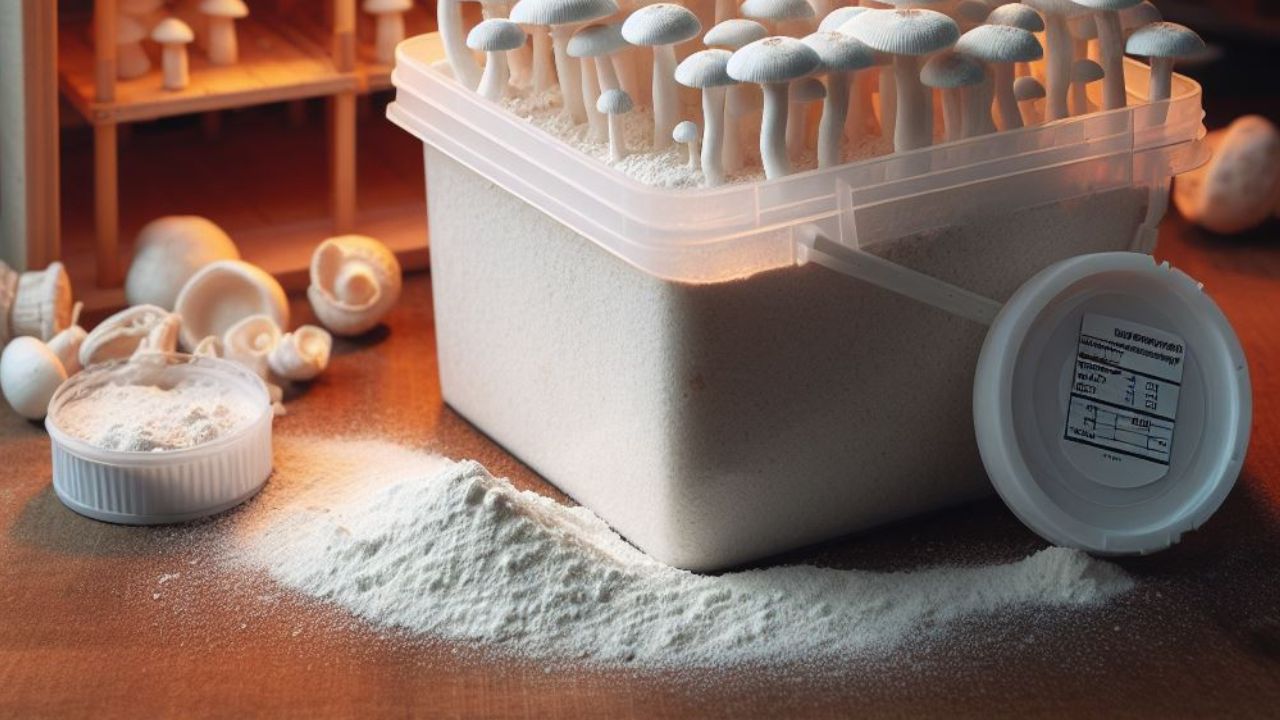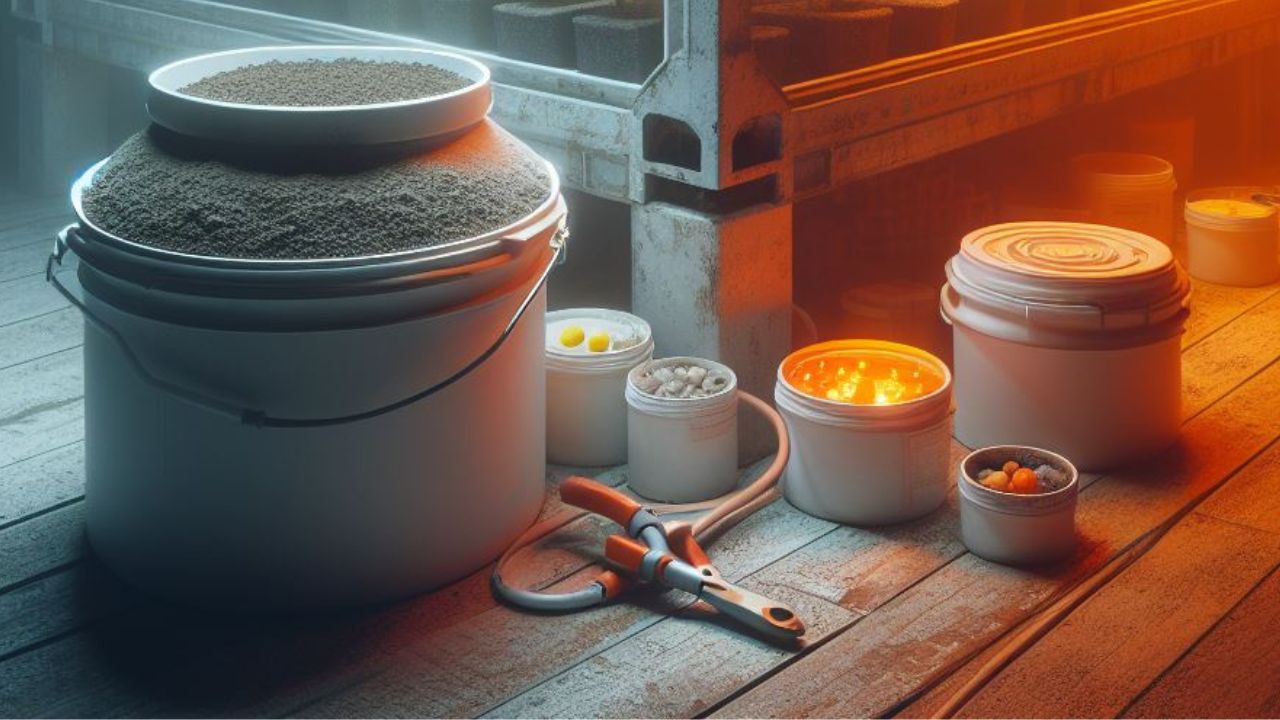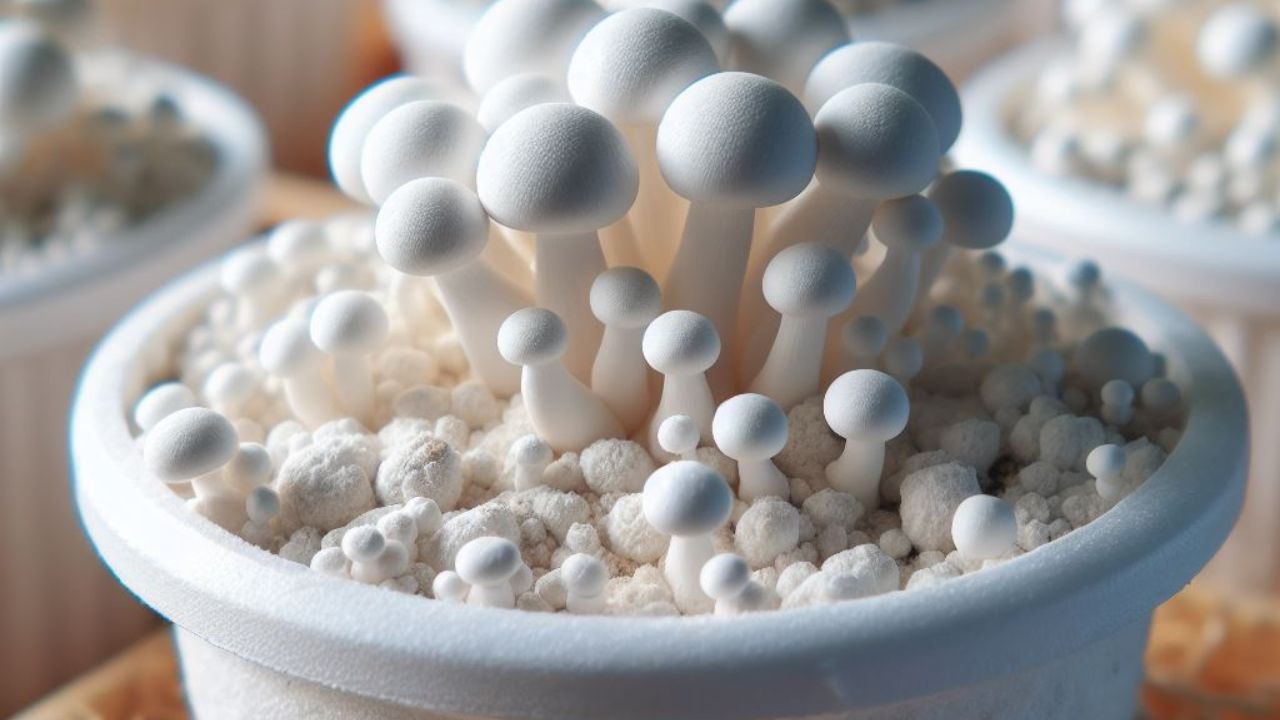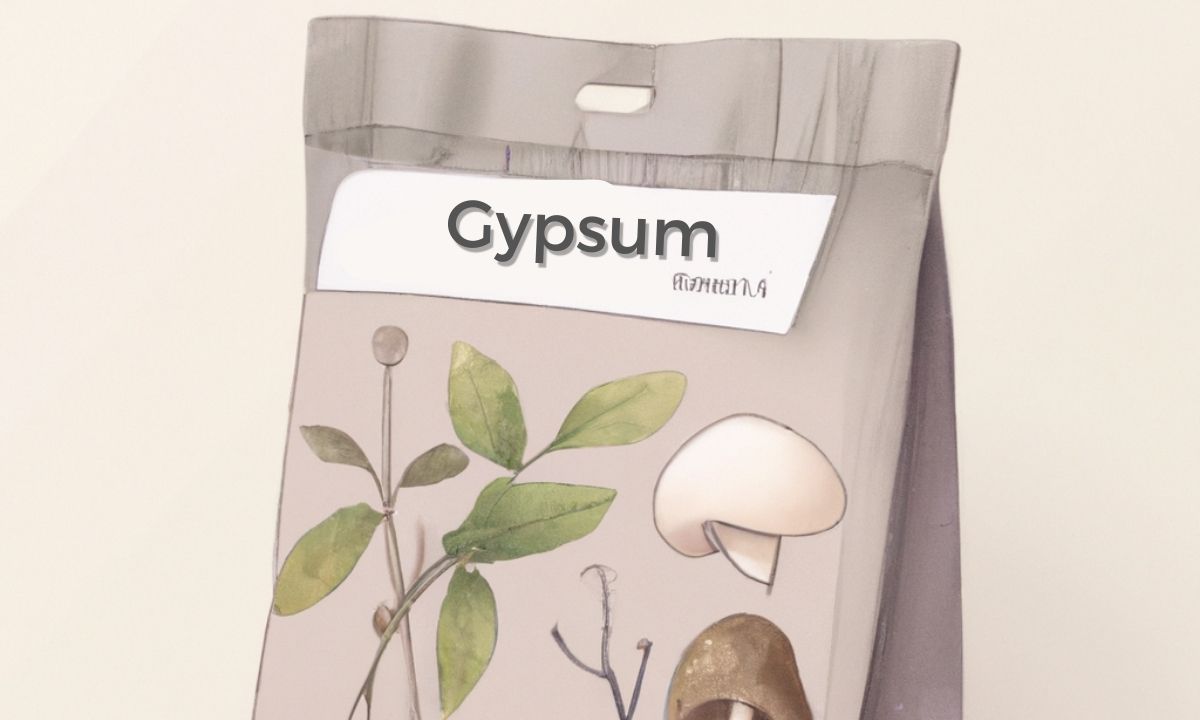Using Gypsum to Enhance Mushroom Growth
Did you know that gypsum is a very useful mineral for mushroom cultivation?
In this post I will explain how you can use it to improve the texture, pH balance and water retention of the substrate.
Contents
- 1 The Takeaways
- 2 What Is Gypsum And Why Should You Use It In Your Mushroom Substrate?
- 3 Is Gypsum Necessary For The Substrate?
- 4 What Type Of Gypsum Should You Use For Mushroom Cultivation?
- 5 How Much Gypsum Should Be Added To The Mushroom Substrate?
- 6 How to Use Gypsum to Enhance Mushroom Growth?
- 7 Where to Buy Gypsum for Mushrooms?
- 8 Conclusion
The Takeaways
- To create an optimal substrate for fungal growth, you can use gypsum.
- Add 0.5% to 5% gypsum by weight to the substrate or inoculated grain.
- Preferably choose a fine, high quality gypsum, such as agricultural gypsum.
What Is Gypsum And Why Should You Use It In Your Mushroom Substrate?
Gypsum is a mineral consisting of hydrated calcium sulfate, which is often used as an ingredient in substrate and mulch mixtures for mushroom growing.
Gypsum has several benefits for mushroom growth, such as:
- Gypsum can be used to adjust the pH of the growing substrate. Fungi prefer a slightly acidic substrate with a pH between 6 and 7. Gypsum helps neutralize the alkalinity of some substrate ingredients, such as lime or wood ash.
- Improve water retention: Gypsum also improves the water holding capacity of the growing medium. Gypsum absorbs water and releases it slowly, which prevents the substrate from drying out or becoming too soggy. Gypsum also improves the texture of the substrate, making it more spongy and airy.
- Gypsum contains calcium, which is an important nutrient for mycelial growth. Calcium helps form bridges between the hyphae of the mycelium, making it stronger and more resistant. Gypsum also contains sulfur, which is an essential element for amino acid and protein synthesis in fungi.

Is Gypsum Necessary For The Substrate?
No. I highly recommend gypsum, although it is not an indispensable ingredient for the mushroom substrate.
What Type Of Gypsum Should You Use For Mushroom Cultivation?
If you want to grow mushrooms successfully, you need to use a good quality gypsum that provides calcium and sulfur to the growing substrate.
Agricultural gypsum is best suited for this purpose, as it is a fine powder that mixes easily with the substrate.
Do not use construction or gardening gypsum, because it may contain impurities or additives that harm fungi.
Agricultural gypsum will help you to improve the structure, aeration and pH of the substrate, which will favor the development of mycelia and the production of fruiting.

How Much Gypsum Should Be Added To The Mushroom Substrate?
The specific recipe of the substrate and the species of mushroom you want to grow will determine the exact amount of gypsum to add to the substrate.
But a general rule of thumb is that gypsum should represent between 2% and 5% of the total weight of the substrate.
For example, if you use 1 kg of straw as substrate, you will have to add between 20 g and 50 g of gypsum.
I recommend that you add the gypsum at the beginning of the substrate preparation process, before pasteurizing or sterilizing it.
Thus, the gypsum will be evenly distributed throughout the substrate and will have sufficient time to react with the other ingredients.

How to Use Gypsum to Enhance Mushroom Growth?
At this point, you are probably interested in using this supplement in your crop, but you are asking yourself questions like how much gypsum in mushroom substrate or how to prepare it.
Do not worry. In this guide, I explain all the details.
Step 1: Choose a High-quality Gypsum Product
The first step in using gypsum for mushroom growth is to choose a high-quality product.
Look for gypsum that is free from contaminants and meets industry standards for purity.
Some popular brands of gypsum for mushroom cultivation include Espoma Organic Garden Gypsum, Gypsum Powder by Calcium Products, and USA Gypsum Agricultural Gypsum.
Step 2: Prepare the Substrate
To prepare the substrate, mix it with gypsum at a rate of 1-2% by weight. For example, if you are using 10 pounds of substrate, add 0.1 to 0.2 pounds of gypsum.
Step 3: Mix the Gypsum Into the Substrate
Mix the gypsum thoroughly into the substrate to ensure even distribution.
This can be done by hand or using a mechanical mixer.
Be sure to wear gloves and a dust mask to protect yourself from gypsum dust.
Step 4: Let the Substrate Rest
After mixing in the gypsum, let the substrate rest for several days to allow the gypsum to distribute evenly and absorb moisture.
The exact resting time will depend on the substrate and the specific gypsum product being used.
A good rule of thumb is to let the substrate rest for at least 48 hours before inoculating it with mushroom spawn.
Step 5: Inoculate the Substrate With Mushroom Spawn
Once the substrate has rested, it is ready to be inoculated with mushroom spawn.
The exact method of inoculation will depend on the type of mushroom being grown and the chosen substrate.
Follow the instructions carefully and maintain a clean, sterile environment to avoid contamination.
Step 6: Monitor the Growth of the Mushrooms
Monitor the growth of the mushrooms carefully and make any necessary adjustments to the environment or nutrient levels.
Where to Buy Gypsum for Mushrooms?
Here are some popular providers of gypsum in the US:
- Espoma Organic Garden Gypsum
- Gypsum Powder by Calcium Products
- USA Gypsum Agricultural Gypsum
- Midwest Products Co.
- Gardening Solutionz Gypsum
- The Andersons Organic Gypsum
- Southern AG Gypsum
- Greenway Biotech Gypsum Powder
- Puracy Organic Gypsum Powder
- Pure Organic Ingredients Gypsum Powder
It is important to do your own research and choose a provider that meets your specific needs and budget.
Conclusion
Using gypsum to enhance mushroom growth can be a simple and effective way to improve the texture, pH balance, and water retention of the substrate.

